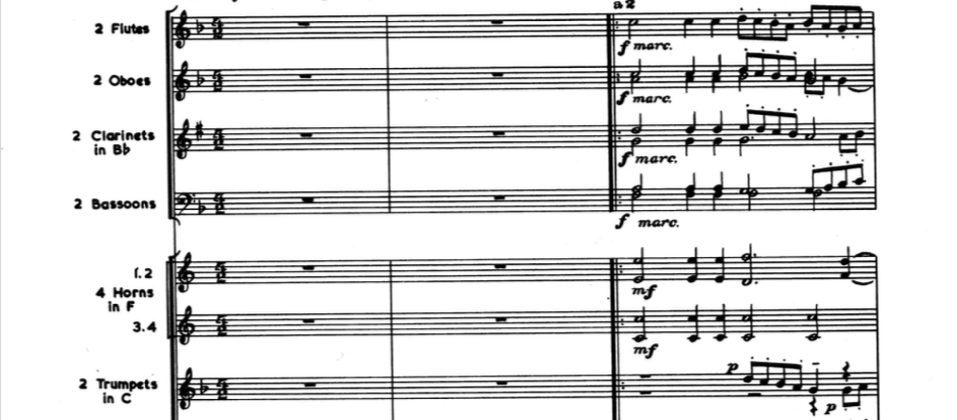The Courtly Dances From Gloriana: Program Note
Benjamin Britten, arr. Jan Bach
Described in 1953 as “one of the great disasters of operatic history,” Benjamin Britten’s opera Gloriana was far from one of the well received works in his repertory. Britten is unequivocally defined as a central figure of 20th-century British classical music; his operas, song cycles, and instrumental compositions quickly fell into the canon of western music, considering their remarkably thoughtful orchestration, use of harmony, and variety of form.
Britten was called on to write Gloriana by the Arts Council of Great Britain in celebration of the coronation of Queen Elizabeth II. The resulting work? A presentation of Her Majesty as a kind but flawed individual, fueled by vanity and desire. The opera closes with Elizabeth condemning her lover to death by treason, when she is left alone on stage, in monologue. While the work garnered support from other British composers—most notably Ralph Vaughan Williams and Imogen Holst—many regarded it as a chance to raise spirits felt in the hollow discontent over the Cold War. Britten (likely unintentionally) instead reinforced the lugubrious atmosphere already glazed over the city of London.
After its failure, Britten arranged a symphonic suite for orchestra, entitled Gloriana. The work begins with the bracing Tournament music that opens the opera, followed by Gloriana’s haunting Second Lute Song, the vigorous Courtly Dances, and concludes with the music of the opera’s Epilogue. Britten indicated in his score that the Courtly Dances could be extracted for a standalone performance, and were later arranged for wind band by Jan Bach, a prolific American composer and arranger. The dances, performed attacca, are March, Coranto, Pavane, Morris Dance, Galliard, Lavolta, and March (reprise).
Program Note by Tyler Ehrlich
Let me know if you use the above note! Email me here. (A citation would be great too!)

